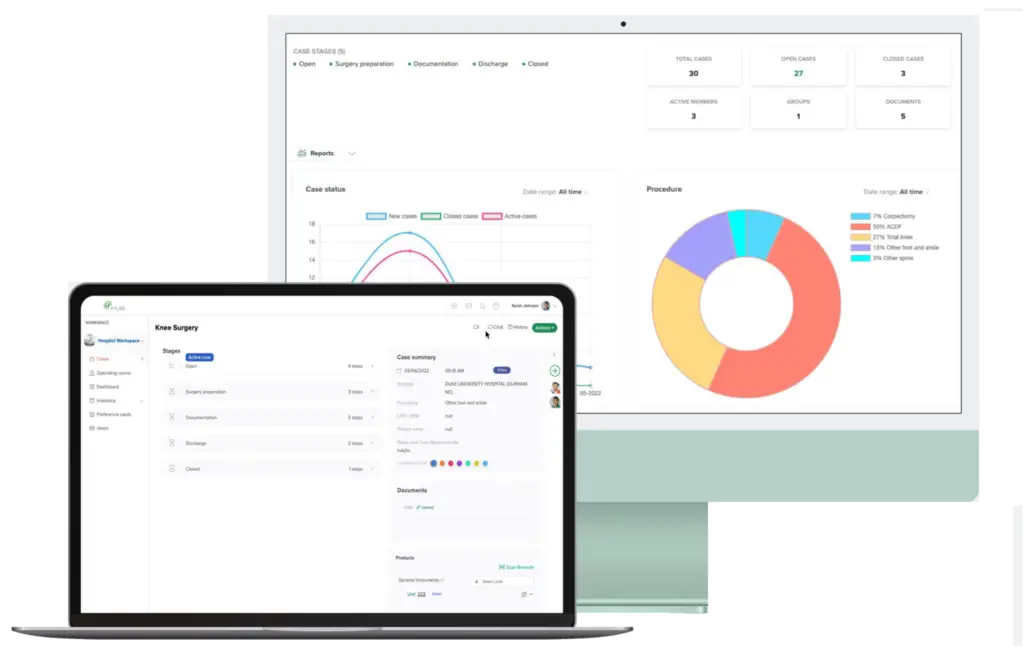Inventory management is a critical aspect of running a successful healthcare facility. It involves the process of ordering, storing, and using medical inventory to meet patient demand. One of the key challenges in medical inventory management is finding the right balance of inventory levels. Too much inventory can lead to excess costs and waste, while too little inventory can result in stockouts and disrupted patient care. In this article, we will delve deeper into the art of balancing inventory levels and how it can benefit your healthcare facility, with a focus on how HUB Healthcare can help optimize this process.
Understanding Inventory Levels
Inventory levels refer to the amount of stock a healthcare facility has on hand at any given time. It includes both raw materials and finished goods. Inventory levels are typically measured in units or dollars and can be categorized into three main types: raw materials, work-in-progress, and finished goods.
Raw Materials
Raw materials are the basic components used to create a product. They are essential for production. Without the right amount of raw materials, a facility may not be able to produce its medical supplies, leading to potential delays and disrupted patient care.
Work-in-Progress
Work-in-progress refers to products that are in the process of being manufactured. These items have started the production process but are not yet complete. Managing work-in-progress inventory is crucial as it can impact the efficiency of the production process and the overall inventory levels.
Finished Goods
Finished goods are the final products ready to be used or sold. These items must meet patient demand and avoid stockouts. Having the right amount of finished goods inventory is crucial for meeting patient demand and maintaining satisfaction.
By understanding and managing these different types of inventory, healthcare facilities can better balance their inventory levels and optimize their operations.
The Importance of Balancing Inventory Levels
Maintaining the right balance of inventory levels is crucial for the success of any healthcare facility. It can have a significant impact on the bottom line, patient satisfaction, and overall operations. Here are some key reasons why balancing inventory levels is important:
Cost Control
Excess inventory can lead to increased costs for a facility. Holding onto excess inventory ties up valuable resources such as storage space, labor, and capital. It also increases the risk of inventory becoming obsolete or damaged, resulting in additional costs. On the other hand, too little inventory can result in frequent stockouts, leading to disrupted patient care and potential dissatisfaction. By finding the right balance of inventory levels, facilities can control costs and optimize their resources.
Patient Satisfaction
Maintaining the right inventory levels is crucial for meeting patient demand and ensuring satisfaction. If a facility has too little inventory, it may not be able to fulfill patient needs, leading to disrupted care and dissatisfied patients. On the other hand, having excess inventory can also result in delays in fulfilling needs, leading to patient dissatisfaction. By balancing inventory levels, facilities can ensure they have enough stock to meet patient demand and maintain high levels of satisfaction.
Efficient Operations
Balancing inventory levels can also lead to more efficient operations. With the right amount of inventory, facilities can avoid stockouts and delays in fulfilling needs, leading to smoother operations. It also allows facilities to optimize their production and purchasing processes, reducing waste and improving overall efficiency.
The Role of Forecasting in Determining Inventory Levels
Forecasting is a crucial aspect of inventory planning and plays a significant role in determining inventory levels. It involves predicting future demand for products based on historical data, market trends, and other factors. By accurately forecasting demand, facilities can determine the right amount of inventory to have on hand to meet patient demand.
Benefits of Forecasting for Inventory Planning
Forecasting demand for products can bring several benefits to facilities when it comes to inventory planning:
- Accurate Inventory Levels: By forecasting demand, facilities can determine the right amount of inventory to have on hand, avoiding excess or insufficient stock.
- Cost Savings: Accurate forecasting can help facilities avoid excess inventory, reducing storage and labor costs.
- Improved Patient Satisfaction: By having the right amount of inventory on hand, facilities can fulfill patient needs promptly, leading to higher levels of satisfaction.
- Efficient Operations: Forecasting can help facilities optimize their production and purchasing processes, leading to more efficient operations.
Leveraging HUB Healthcare for Medical Inventory Management
HUB Healthcare provides advanced inventory management software that helps healthcare facilities maintain the right balance of inventory levels. Here are some ways HUB Healthcare can assist:
Real-Time Tracking
HUB Healthcare’s inventory management software offers real-time tracking of inventory levels, ensuring that facilities always have up-to-date information. This feature helps in avoiding stockouts and overstocking, thus optimizing inventory levels.
System Integration
HUB Healthcare’s system can seamlessly integrate with existing patient management software and healthcare document management systems. This integration ensures that all data is synchronized, reducing errors and improving efficiency.
Automation and Forecasting
HUB Healthcare provides automation tools that streamline the inventory management process. These tools include automated ordering and restocking based on predictive analytics and healthcare analytics, ensuring that inventory levels are maintained optimally.
Compliance and Reporting
The software ensures compliance with healthcare regulations and provides detailed reporting and analytics. This helps facilities monitor their inventory levels, forecast demand accurately, and make informed decisions.
Finding the Sweet Spot for Your Facility
Finding the right balance of inventory levels is not a one-size-fits-all approach. It requires facilities to consider various factors, such as their industry, patient demand, and production capabilities. Here are some steps facilities can take to find the sweet spot for their inventory levels:
Analyze Historical Data
One of the first steps in finding the right balance of inventory levels is to analyze historical data. By looking at past sales data, facilities can identify trends and patterns in patient demand. This can help them forecast future demand and determine the right amount of inventory to have on hand.
Consider Industry and Seasonal Trends
Different industries and products may have different demand patterns. Facilities need to consider these industry and seasonal trends when determining inventory levels to avoid excess or insufficient stock.
Utilize Inventory Management Software
Inventory management software can be a valuable tool in finding the right balance of inventory levels. These software solutions use advanced algorithms and data analysis to help facilities forecast demand and determine optimal inventory levels.
Monitor and Adjust Inventory Levels
Finding the sweet spot for inventory levels is an ongoing process. Facilities need to regularly monitor their inventory levels and make adjustments as needed. This can involve increasing or decreasing inventory levels based on changes in patient demand, market trends, or production capabilities.
Conclusion
Balancing inventory levels is an essential aspect of inventory management and can have a significant impact on a healthcare facility’s success. By accurately forecasting demand and finding the right balance of inventory levels, facilities can control costs, improve patient satisfaction, and optimize their operations. It may take some trial and error to find the sweet spot for your facility, but with the right strategies and tools, it is achievable. HUB Healthcare offers comprehensive solutions to help facilities achieve optimal inventory management. Visit our Help Center to learn more about how HUB Healthcare can benefit your facility.







